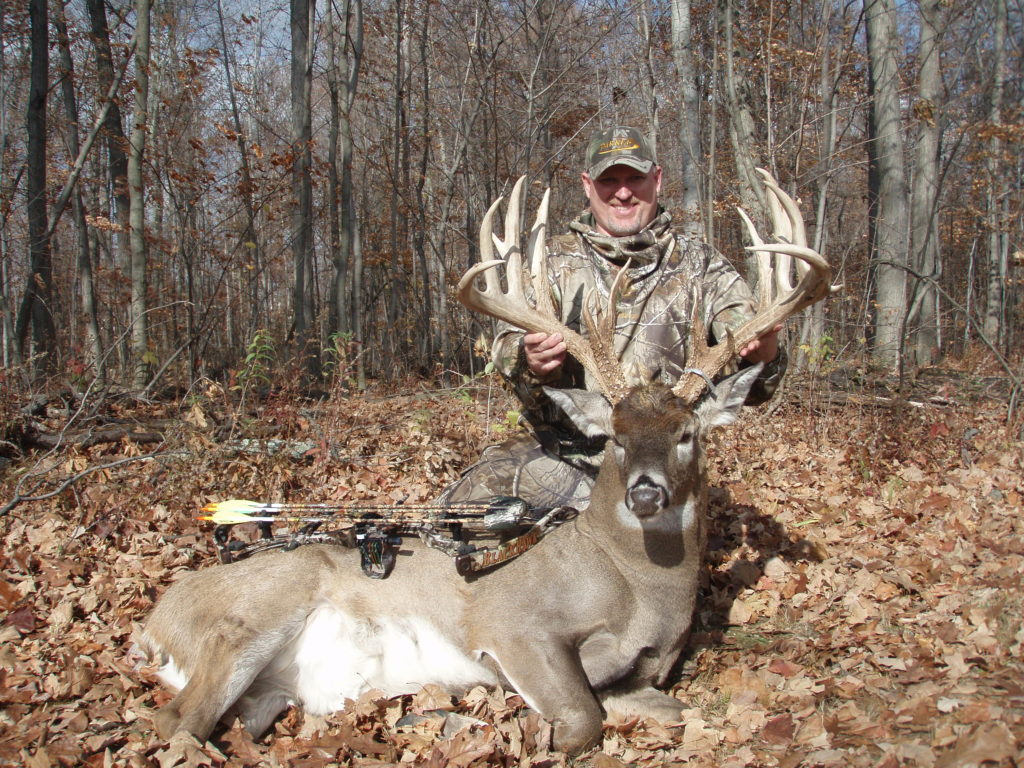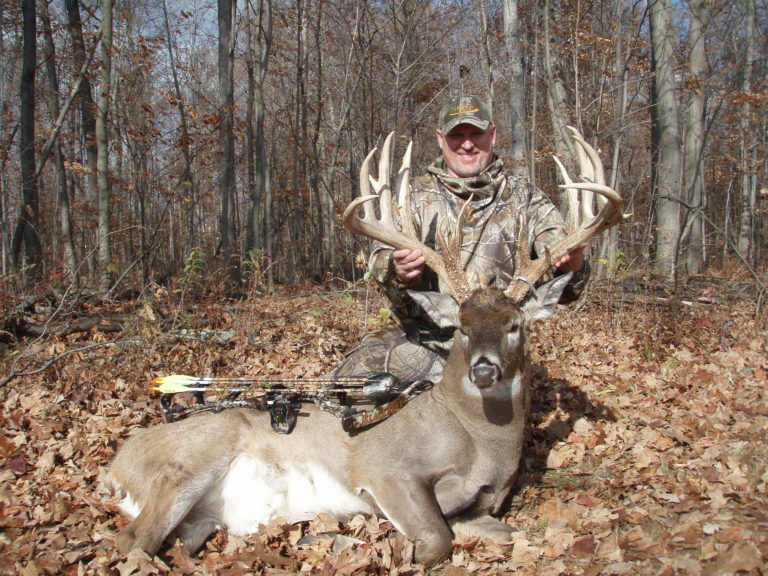Hunting from a well-crafted ground blind is pure joy. You’ll hunt longer, welcome inclement weather, and relish the heart-pounding excitement of seeing that buck eyeball-to-eyeball.
If you watch hunting shows on television, you’ve seen hunters like Mark Drury and Phillip Vanderpool take great deer from ground blinds. However, two archers who have flown under the media radar include identical twins, Steve and Scott Esker who have taken seven giant Ohio bucks over 200 inches in the past 10 years. I interviewed the two dedicated archers at last year’s ATA show and was surprised to learn that they hunt exclusively from ground blinds.
I’ve condensed their action into six key factors. Here’s how to succeed from ground zero, have more fun hunting, and perhaps bag that buck of a lifetime.

Location, location, location– This old real-estate slogan is doubly true for bagging a great buck. Just as you wouldn’t put a tree stand in any-ole tree, where you place your ground blind is critically important and the strategies apply equally to elevated stands and ground zero.
The Esker brothers don’t own property but scout their rural Ohio countryside looking for big bucks. Once one is located, they knock on doors to gain permission, then set up ground blinds at a bottleneck, pinch-point, or transition zone. Such locations are ideal because deer are forced into proximity.
In the early season, post your blind near food sources such as beans, corn, or alfalfa. By late summer, deer have made distinctive entry and exit trails and posting 20-30 yards inside the tree line along a corridor can be magical. Once crops are harvested and deer move to feeding on soft and hard mast, select a new location with maximum deer travel.

Brush up for concealment– Wild turkeys are plain stupid about blinds, yet an old whitetail doe will pick up the change in its environment on the first pass. Think about the best way to approach your spot without spooking deer. Once done, trim that trail and use the brush to disguise the blind. The Eskers cover their blinds so that there is no discernable shape.
The rounded dome and smooth vertical edges of a blind look unnatural to deer and you need to brush its silhouette. If you cut limbs in August, the leaves will remain on the branches for extra concealment. Evergreen boughs match early season color and help camouflage dying vegetation. Be sure to wear gloves and rubber boots while you are working on your blind.
Pop the blind outdoors several days before deployment to dissipate scent. Likewise, as you erect the structure, avoid as much human scent contamination as possible. Deploy the blind at least two weeks before hunting, perhaps a month if you’ll hunt on opening day. Eventually, even the wiliest deer will ignore the structure.
Prepare for Patience

You will quickly learn the joys of blind hunting as you sit out of the wind, rain, and cold and can move almost at will. You don’t have to worry about dropping your release and there is no safety harness to wrestle. You can sit in a comfortable chair and lay out your calls, favorite snacks, and beverage. A thermos of hot chocolate is a tremendous asset on a frosty morning, to the point it almost seems like cheating.
Folding camp chairs are often used by blind hunters yet can be counterproductive. Comfort gets an A+ yet as you sit up to shoot, these chairs often creak or require excessive movement. Personally, I prefer a “task” chair with a straight back. Some specialty blind chairs swivel and are worth the money at the moment of truth. Once you are settled inside your blind, go through the full range of shooting motions just as you would from a tree stand. Make sure that everything moves silently and slowly.
Limit the Light

It’s possible to hunt 360 degrees from a ground blind, but that’s often a bad choice. You must have windows open the full circumference of the blind which allows for easy detection. Like standing in a window, deer will see you and you’ll have to constantly rotate to watch all sides.
Darkness is your friend. You want brightness outside and darkness inside to conceal your movement. Resist the urge to peek outside windows and cover your face and hands. Match your camouflage to the inside of the blind to help concealment early and late when deer can see inside the blind. Get a good pair of binos that work in low light, like the Burris HD signature series.
Moment of Truth
The benefits of hunting from an enclosed structure can seduce your hunting savvy. It’s sooooo easy to rest the bow on your lap and text your friends or check a favorite site. If you’ve been hunting on successive days, the dark environment can entice drowsy eyes and frequent napping.
When you first set up your blind for scent dissipation, practice shooting from it. With a compound or crossbow, the flight of the arrow is well below the line of sight, so always double-check that your shooting position is high enough for window clearance. Take a broadhead target to the blind for a few practice shots. It also makes a good seat.
Plan the Shot

An arrow from a ground blind flies parallel to the ground so you will get the same angle as when practicing on a 3D target. A buck may still duck at launch, yet you have the full broadside heart/lung area as a target and are less likely to miss. Sights like the Burris Oracle will determine range automatically and give you the correct aiming point.
Additionally, you can spice up the spots where you want a deer to pause. Placing a small amount of deer lure in one or more locations will often cause a deer to stop and sniff the ground. This both distracts their attention from your location and provides a standing shot.
Mineral licks are legal in most states and can both attract and pause deer for an optimal shot angle. The Esker brothers use minerals extensively and have developed their own formula with excellent success. By following these six steps, you’ll find that blind hunting will open a new world of adventure. Hunting “on the level” creates a natural high that isn’t tree dependent.





